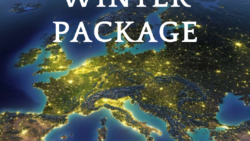
Anti-Covid measures in force in Italy until April 30, 2021, after the last statutory provisions and the extension of the state of emergency
(Last update: 8 February 2021)
In the last couple of weeks, the Italian government has adopted new measures to contain the Covid-19 pandemic, introducing some significant innovations compared to the regulations previously in place. In this brief article we summarise the main features of the current emergency regulatory framework.
Law Decree January 14, 2021, no. 2, the extension of the state of emergency and the “White Areas”
With Law Decree January 14, 2021, no. 2, the Italian Government acknowledges first of all the extension of the state of emergency until April 30, 2021, hence the possibility of adopting the measures already provided for by Legislative Decree no. 19/2020 and no. 33/2020 until that date. The extension was ordered by a specific resolution approved by the Council of Ministers on January 13, 2021, together with Law Decree no. 2.
The extension of the state of emergency determines the automatic postponement of the measures related to the same deadline, such as the anti-contagion measures adopted in the context of civil, criminal and tax judicial proceedings (while in the administrative judicial proceeding the same measures were expressly extended, again until April 30, 2021, by Law Decree December 31, 2020, no. 183 – “milleproroghe”).
Another relevant example concerns authorizations, permits, and in general administrative acts that are favorable to the applicant. Based on article 103 of Law Decree no. 18/2020 (the so-called “Cura Italia Decree”), if the expiry of such acts (identified in detail as “certificates, assessments, permits, concessions, authorizations and however called enabling acts”) falls within the period from January 31, 2021 to the end of the state of emergency, it is automatically extended up to ninety days after the end of the state of emergency itself. The above-mentioned authorizing acts, therefore, currently have extended their validity until July 29, 2021 (ninety days after the expiry of the state of emergency).
The new Law Decree also expressly reiterated the ban on cross-regional (and autonomous provinces) travels until February 15, 2021, with the “usual” exceptions: proven work needs, situations of necessity and health reasons, as well as the cases of returning to residence, domicile or home. For this last exception, however, the Law Decree does not specify whether the so called “holiday homes” are to be considered in the “home” category and therefore whether or not the prohibition (expressly specified in previous legislative texts) to move towards this type of property outside the region is confirmed. The Government has specified with an interpretative act that travel to holiday homes is allowed even outside the region fort the owner or long-term lessee.
The “exceptions” to the travel ban already provided for the Christmas holidays are also confirmed until March 5: the decree allows two people to reach a single private house, where other people live, once a day and from 5.00 to 22.00. Other persons are allowed to travel with the two people above: children under the age of fourteen subject to their parental authority and disabled or non self-sufficient people living with them. In the regions with a higher risk level (so-called Orange and Red Zones) the above possibility of travel is limited to the municipal area, except in the case of residents in municipalities with less than 5,000 inhabitants, who are allowed to travel to other municipalities, within a radius of 30 km (as long as those municipalities are not the capital of their province). In regions with lower risk (Yellow Zone), “daily” travels may take place within regional borders.
The Decree introduces also a new distinction for regions in which the pandemic has a particularly low incidence (the so-called “White Zone”): these are regional territories characterized by a low severity scenario (“type 1”, according to the classification provided by the Ministry of Health and taken as reference since dPCM November 3, 2020), with a low risk level and a weekly incidence of infections, for three consecutive weeks, of less than 50 cases per 100,000 inhabitants. In these regions the “ordinary” limitations provided by the d.P.C.M. (see the next paragraph) do not apply, and ad hoc protocols govern the permitted activities in the “White Zone” region concerned. Similarly, specific provisions can also be put in place for particularly relevant activities from an epidemiological point of view.
D.P.C.M. January 14, 2021
D.P.C.M. January 14, 2021 introduced detailed rules on the limitations in force for the period January 15-March 5, 2021.
The limitations follow the scheme of the past months, with general measures for the whole national territory in the Yellow Zones and further restrictions, due to the increased severity of the emergency, for the Orange Zones and the Red Zones.
The measures for the Yellow Zone refer first of all to the provisions of the legislative decree no. 2/2021 regarding the night “curfew” from 22.00 to 5.00 and the possibility of daily travel.
An important change for the Yellow Zone concerns the reopening of museums and other cultural heritage institutes and monuments to the public.
In addition, a variable percentage (from 50% to 75%) of face-to-face teaching is envisaged in upper secondary schools. The percentage may be revised by the Regions or the Ministry of Health in relation to the health conditions. Universities can instead adopt solutions autonomously on the basis of their own organizational plans in relation to the epidemiological framework.
From February 15, the examinations for public authorities’ job selection procedures will be allowed to take place in venues with less than thirty candidates.
As for economic activities, the take-away of food and drinks from bars and similar activities is only allowed until 6.00 pm. Bookstores, on the other hand, are added to the list of activities that may remain open even during the holiday and pre-holiday closures of markets, shopping centers and similar structures.
For the Regions in the Orange Zone, the municipal area (or 30 km for Municipalities under 5,000 inhabitants) travel limitation , already mentioned in the previous paragraph, needs to be added to the Yellow Zones restrictions. Moreover, in the Orange Zone a general suspension of catering services is in place, without prejudice to the possibility of home delivery or take-away by 10 pm. Likewise, museums and similar institutions are not allowed to open.
The Red Zone adds to the above limitations the closure of sports facilities, upper secondary schools (and the second and third year of lower secondary school) and universities, which carry out their teaching activities at a distance.
Law January 29, 2021, n. 6 and the conversion into law of the “Decreto Natale”
In the past days the Italian Parliament has converted into law Law Decree no. 172/2020 (so-called “Decreto Natale” – Christmas Decree), with Law January 29, 2021, no. 6. The “Christmas Decree” concerned measures for the winter holidays, as recalled also above, and therefore today outdated. Other measures included in Law no. 6/2021 were inserted in other Law Decrees concerning anti-covid limitations for December and January (namely Law Decree no. 158/2020 and Law Decree no. 1/2021) and are therefore outdated, as well.
It is worth noticing, instead, a provision of Law no. 6/2021 that clarifies an aspect of the 60% tax-credit measure introduced by Law Decree no. 34/2021 (so-called “Decreto Rilancio”), currently in place until 30 April 2021, for lease fees paid by tourist and accommodation businesses, travel agencies and tour operators with annual incomes under 5 million euros. According to the clarification contained in the new law, the 60% tax credit applies actually only to the businesses that have reduced their revenues by at least 50% from the relevant month in the year 2019.
The current framework of the “Zones”
Finally, we insert below the current classification of the “zones” for the Italian regions, following the last ordinances of the Ministry of Health, and the specific local measures (concerning the territory of single Provinces or Municipalities), as provided of by regional acts:
- Yellow zone: Abruzzo, Aosta Valley, Friuli Venezia Giulia, Latium, Liguria, Marches, Piedmont, Veneto, Calabria, Emilia Romagna, Lombardy, Basilicata, Campania, Molise, Autonomous Province of Trento, Tuscany;
- Orange zone: Sicily, autonomous province of Bolzano, Apulia, Umbria (until 15 February 2021) and Sardinia (until 8 February 2021);
- Red zone: Perugia Province, six municipalities of the Terni Province and twenty six municipalities of Molise. The Province of Bolzano-Bozen has adopted further limitation measures, as well.






